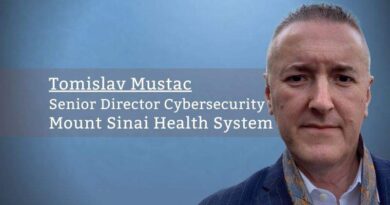Healthcare IT Needs to Get Out of ITs Own Way; Business as (Un)usual
By Will Conaway, CIO/VP, Prime Healthcare
Leaders in healthcare IT are part of the problem. There, I said it. Any of my colleagues can tell you one of my best-known phrases is “Define the Problem.” Recently, I have noticed that many of the discussions about IT challenges in healthcare have revolved around end users. But are end users the problem or a symptom of a more systemic issue? Loosely put, the dialogs incorporate the concept of the Three A’s: Adoptability, Adaptability, and “Adept-ability.” How, where, and when to address these Three A’s in healthcare IT continues to spotlight a glaringly obvious flaw: our leadership may have vast knowledge of both healthcare and IT. Business operations and strategy? Not so much. And therein lies the problem. Using our Three A’s as a mantra, let’s examine some hotspots in healthcare IT and what can be done to address them.
ADOPTABILITY
With the advent of the ACA came the golden age of the EHR system. Although overwhelming at first, healthcare IT leadership rallied to implement systems to meet new requirements and regulations. It’s been several years now since the implementation boon; one would assume that the initial learning curve and adoption of these gargantuan systems would be well into the steady state. Many recent studies present quite the contrary evidence. A recent survey at the Mayo Clinic gaged physician satisfaction with their EHRs. It revealed that only 36 percent of the 6,375 physicians interviewed were satisfied with their own use of the system. More alarming is that in my conversations with physicians from around the world many tell me that they are extremely frustrated with technology in their daily practice. For many providers, technology has removed much of the personal interaction from practicing medicine. They are experiencing “IT fatigue” and express that even one more system change might be too much to take. This should not be ignored by IT leadership and addressing IT fatigue needs to be incorporated into the core practices of healthcare IT professionals. It is crucial that healthcare technology leaders begin to employ more psychology of leadership with an emphasis on teaching our staff to better interact with all people in every department. Learning and leadership development for healthcare technology executives is crucial for healthcare organizations to gain and maintain a competitive advantage. Developmental initiatives will require congruence with corporate strategies if organizational leaders are to address future industry challenges, opportunities, and restraints. These developmental initiatives will require focusing on an organization’s basic issues and what makes good business sense.
ADAPTIBLITY
Business leaders around the globe have learned adapting to new environments and new circumstances needs to become second nature. Somewhere along the line, some healthcare IT leaders seem to have missed the message. Statements like “IT doesn’t need to do strategy” can lead to IT being left out of vital conversations with the rest of leadership in a healthcare organization. With new technologies and new technological challenges continually appearing, IT leaders need to employee business acumen beyond their IT comfort zone. In order for technology leaders to have their rightful place at the table with other departments’ senior leaders, we need to continually seek out greater understanding of the business needs of the organization and of healthcare as an industry.
ADEPT-ABILITY
Advanced technology alone will not provide the products and services that the future of healthcare will demand. The expectation that technology will resolve bad processes, bad procedures, or poorly performing employees is flawed. The future healthcare workplace will change, work processes will change, skill level requirements will change, and technical demands will be different. Building a technical program of the future requires a new paradigm. The new concepts will offer new challenges for leaders and redefine managerial and leadership responsibilities. At the same time, this new paradigm will provide information technology professionals with the opportunity to develop new processes, new practices, and to establish competencies by focusing on organizational strategies and industry necessities.
The new concepts will offer new challenges for leaders and redefine managerial and leadership responsibilities.
…AND A BONUS “A”…
AROUND, as in “still be around tomorrow.” Future successful healthcare IT departments will have the capacity to regenerate and reinvent themselves often. They will foster ideas and have the capacity to implement and utilize those ideas. Healthcare technology leaders have an obligation to all stakeholders to prepare for the opportunities and realities of the future. What an opportunity this offers healthcare information technology professionals to assume their rightful place in the development of their healthcare organization’s future.



